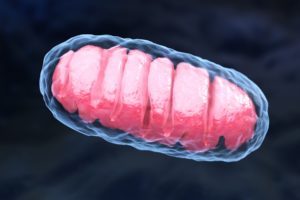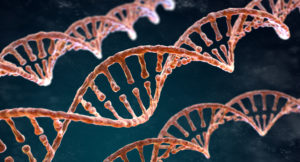When the shock of a cancer diagnosis wears off, most often the next impulse is to ask question after question, trying to understand this new and radical change to your life. Questions like – What is cancer? How does it start, and why does it grow? And most important – What can I and my medical team do to stop it?
With more than 200 kinds of cancer identified today, you may hear different answers depending on your diagnosis. U.S. cancer experts Doug Hanahan and Bob Weinberg from MIT have established, however, that all cancer cells share some core characteristics, or cancer hallmarks. By focusing on these common features, researchers hope to find productive routes to a cure.
So what are these cancer hallmarks? In their original report, Hanahan and Weinberg identified six so-called “core” hallmarks:
1. Generating internal signals for growth and reproduction
Healthy cells constantly communicate amongst themselves by chemical code, or growth factors, giving messages to reproduce and grow, or to die off. This ongoing process is an essential part of your body’s normal self-renewal (for example, your body replaces 2-3 billion skin cells per day).
In normal cells, this growth and reproduction requires growth factors produced outside the cell; for example, in the blood or bone marrow. Cancer cells, however, may produce their own growth factors; or even worse, they may alter the internal signaling process that governs their reproduction, removing any need for growth factors In this case, they only listen to their own internal voice.
2. Evading growth suppressors, neutralizing tumor-prevention processes
Normal cells possess accelerator-like genes that instruct cells to multiply, and brake-like tumor suppressor genes that control the multiplication of cells so that they conform to the normal architecture of tissues and organs. As we’ve seen above, cancer cells grow in the absence of the growth-stimulating signals that normal cells require from their environment. In addition, cancer cells know how to grow in the presence of growth inhibitory signals that normally stop the proliferation of normal cells.
3. Overriding apoptosis, resisting programmed cell death
Healthy cells have a self-limiting function called apoptosis that causes them to stop growing and reproducing at a certain point. This serves many purposes – for example, it causes the webbing between the fingers and toes of a human embryo to fall away – and it also helps to prevent abnormal cells from growing into tumors. Cancerous cells, however, override these limits, and continue to grow.
4. Enabling replicative immortality, prolonging cell life despite mutations
Normal cells carry their own expiry date: each time a cell divides, it picks up a few errors in its DNA. The more times it divides, the more errors the DNA accumulates, and the daughter cells become less able to divide and reproduce. Under normal conditions, these mutations act like a molecular clock, causing the cell either to stop reproducing or to die after several generations. Cancer cells, however, don’t let mutations stand in their way; they just keep reproducing, growing more abnormal with each new division. They achieve this by triggering the release of an enzyme called telomerase – normally found only in developing embryos and stem cells – and applying it to prolong their own life, harboring error-loaded DNA long past its normal limits.
5. Inducing angiogenesis, developing food and waste removal systems
It’s easy to visualize a tumor as a shapeless lump of ugly, abnormal cells. The truth is, however, that a tumor is more like a self-contained rogue organ. To survive and grow past 1 to 3 millimeters, it performs a process called angiogenesis, attracting its own blood vessels for delivering nutrients and oxygen and removing waste lactic acid.
6. Activating metastasis, invading other parts of the body
This is one of the most rightly feared cancer markers: the ability of cancer cells to metastasize – that is, to pick up and move to another part of the body and disrupt and destroy its tissues. While healthy, normal cells are governed by genetic controls that determine their place and function in the body, cancer cells override these controls and wander when they need to, attacking other organs and causing their host’s condition to turn critical.
In the years since their initial discovery of these six core cancer hallmarks, Hanahan and Weinberg have identified four additional hallmarks of cancer cells: two enabling characteristics and two emerging characters:
7. Enabling Characteristic: Introducing genome instability and genome mutation, scrambling cellular DNA
A normal cell’s DNA is relatively stable, with only an occasional mutation. A cancer cell’s genetics, however, are wildly erratic, constantly mutating and changing. This gives cancer cells their extreme ability to evolve, adapt and evade detection.
8. Enabling Characteristic: Triggering tumor-promoting inflammation, heating up surrounding tissues
The link between cancer and inflammation is well established…well enough that Hanahan and Weinberg now see inflammation as a common cancer hallmark. While the cancer cells are not inflamed themselves, they use the body’s normal immune response to the tumor – sending leukocytes and triggering inflammation – to promote the growth of the cancerous cells.
9. Emerging Hallmark: Reprogramming cellular metabolism, transforming the cell to feed the cancer
Normal cells in almost all air-breathing organisms use a process called mitochondrial oxidative phosphorylation, by which the cells combine nutrients with oxygen to produce adenosine triphosphate (ATP) for energy production.
Cancer cells, however, have more glucose receptors (GLUT1) to import glucose into the body of the cell. They use an anaerobic, fermentation-based metabolic program called glycolysis to convert that glucose into ATP, pyruvic acid and the high-energy-producing coenzyme NADH. As a result, the cell converts to one driving purpose: aggressively seeking and finding food for growth. This process is called metabolic reprogramming.
10. Emerging Hallmark: Evading immune destruction, flying under the radar
Cancer cells are adapted for survival, pure and simple – and while the body has powerful immune systems in place to discover and neutralize the threat, cancer cells have many ways of masking themselves to evade the body’s defenses.
What does this mean for you, the patient?
Yes, these cancer hallmarks look daunting! The truth is, however, that each one offers you a new reason for hope. With each new marker that’s identified, researchers add to the strategies they can use to target the vulnerabilities of cancer cells, thus paving the way to a lasting cure. For example, once we’ve developed drugs or drug combinations based on the theory of systems biology that can target multiple hallmarks at the same time, this would efficiently kill most cancer cells and result in lasting cures. This hallmark-focused-approach to cancer care will lead to real benefits for patients and ultimately save lives.



